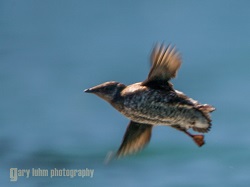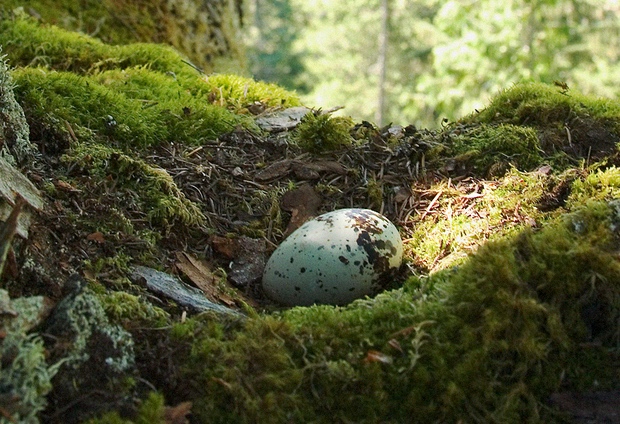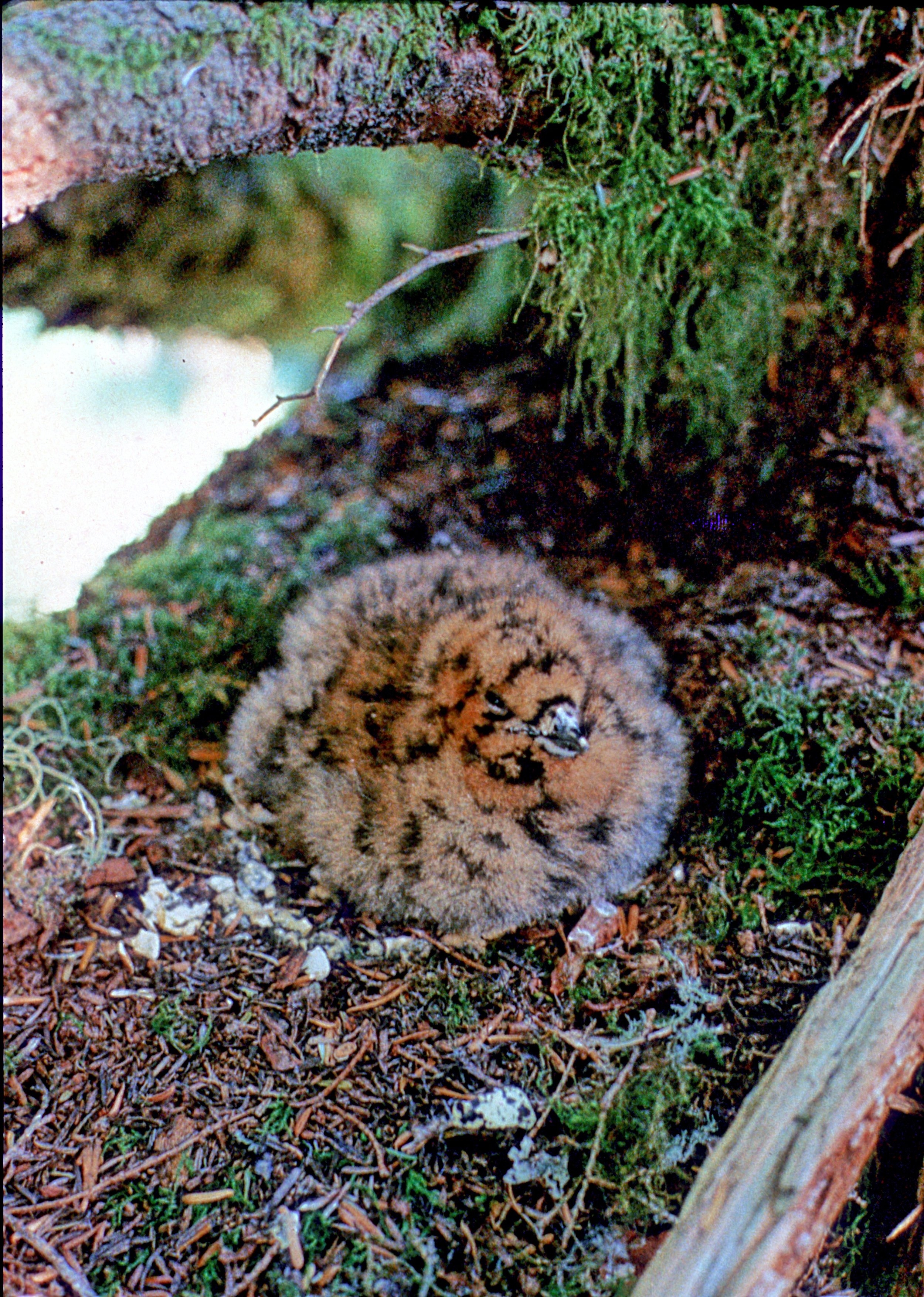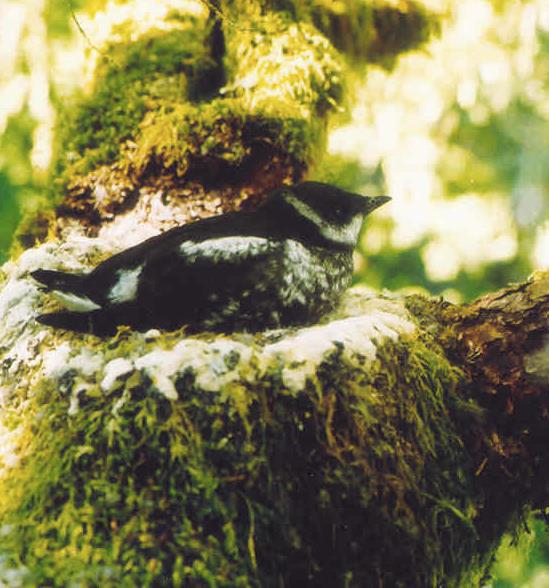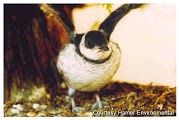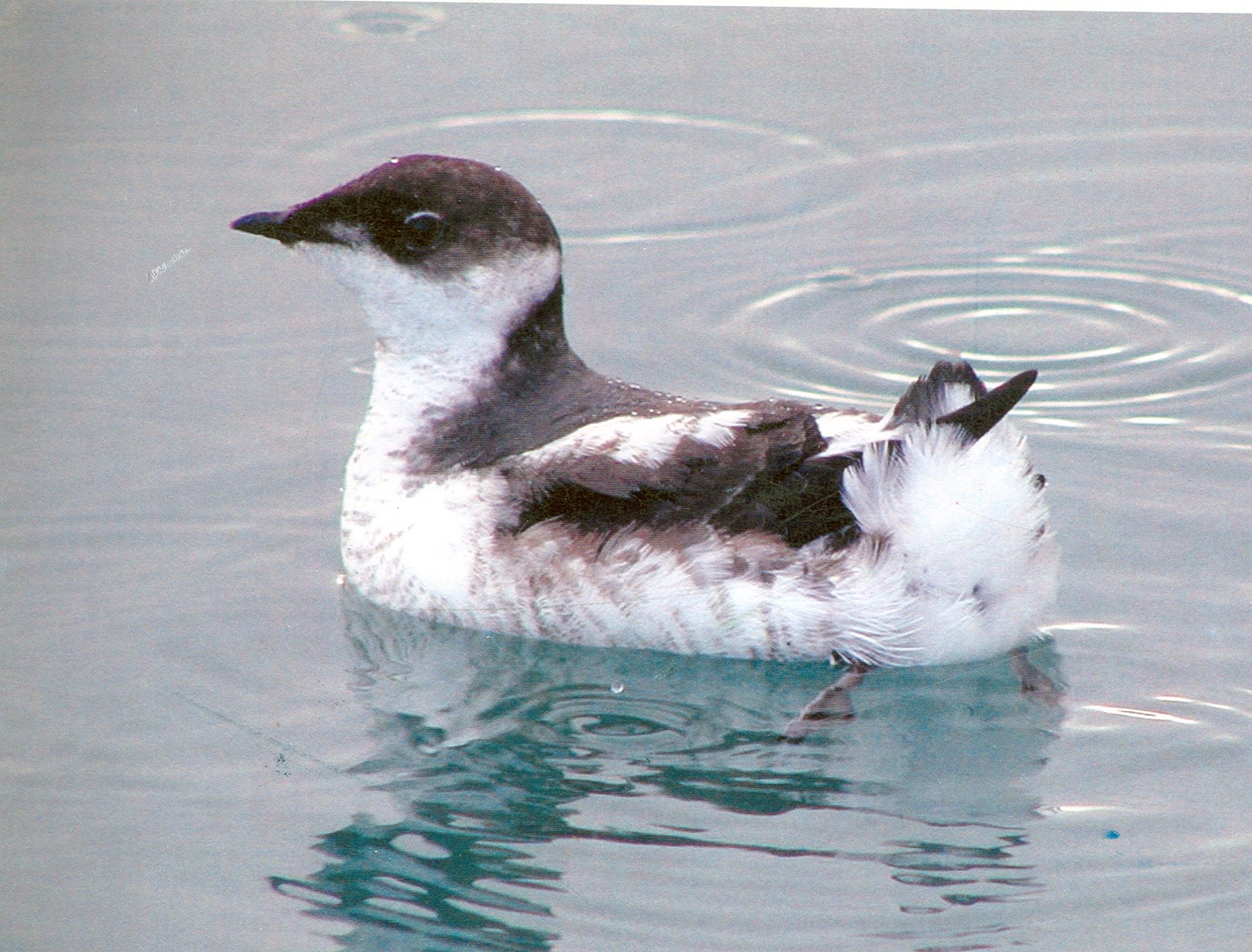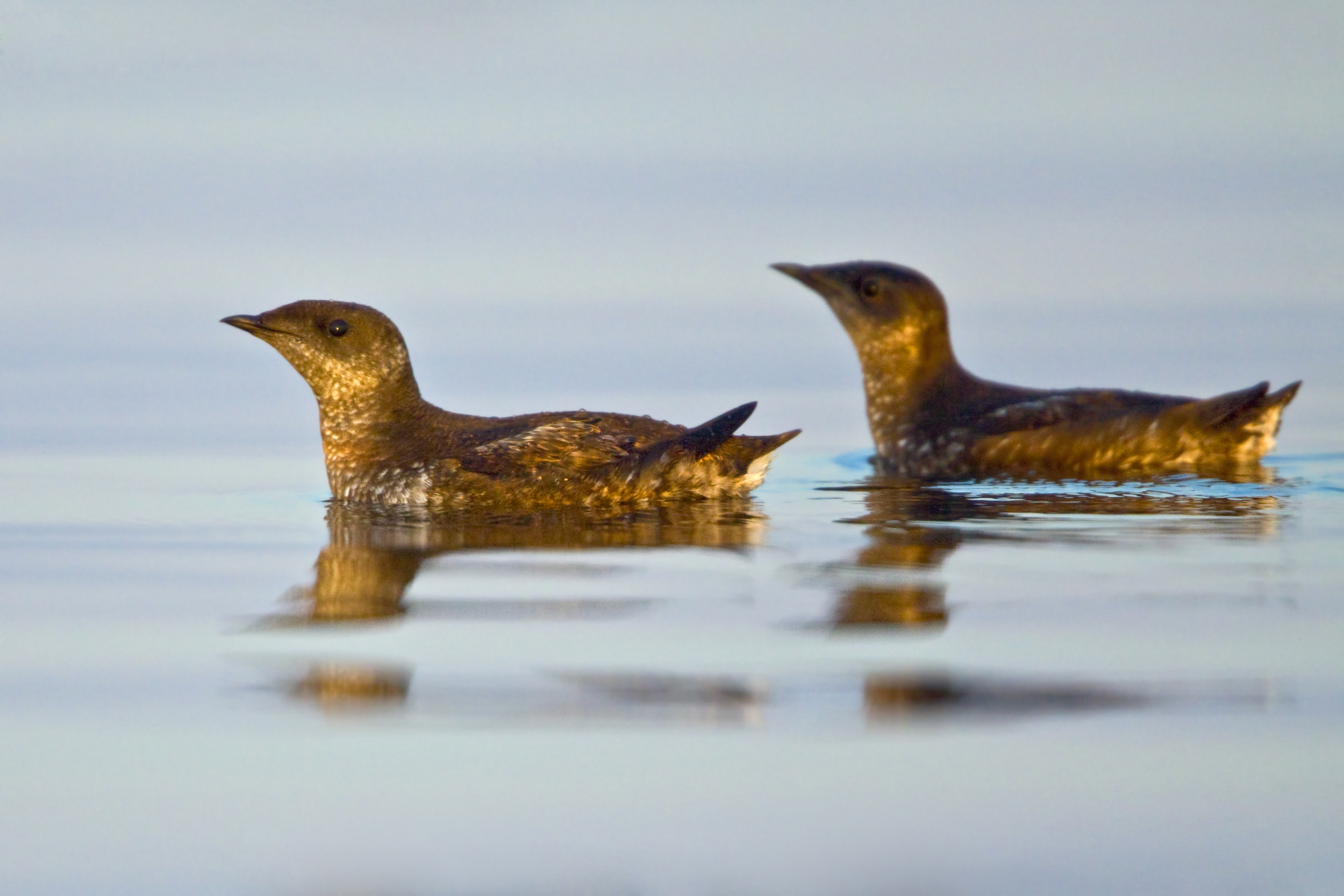JANUARY 19, 2020
Lawsuits pile on to the DNR in the wake of two forest-management plans
As expected, the Long-Term Conservation Strategy now in place for managing state forest lands within the breeding range of the endangered marbled murrelet is under fire. The lawsuits are piling on from the timber industry, the trust beneficiaries, the counties, and an environmental coalition—all stakeholders and tireless advocates for their respective clients and causes. The Long-Term Conservation Strategy (with a 50-year life span) is just half of the Washington Department of Natural Resources grand plan for managing its forests. The other half is the Sustainable Harvest Calculation—a plan for timber harvest volumes that is updated every ten years. While local papers in Western Washington are reported on the various lawsuits, one of the most cogent is from Kimberly Cauvel reporting in the Skagit Herald (GoSkagit online). You can read her excellent article here.
December 3, 2019
Board of Natural Resources Vote 4-2 for Long-Term Conservation Strategy
Tuesday’s Board of Natural Resources meeting brought to an uneasy conclusion the development of the state’s conservation strategy for the endangered Marbled Murrelet. The meeting was appropriately long (5+ hours) and gripping thanks to a very engaged board, much public comment, and agreement that today’s vote was “historic” given the twenty-two years that have passed since the “interim” conservation strategy for the murrelet was put into place.
The upshot: Alternative H was approved in a 4-2 vote with Clallam County Commissioner Bill Peach and Jim Cahill (Senior Budget Assistant to Governor Inslee for Natural Resources) voting “nay” and the rest “yay.” For those of you following this issue, Alternative H was not the alternative preferred by the conservation coalition (Washington Forest Law Center, Washington Environmental Council, Defenders of Wildlife, Conservation Northwest, Olympic Forest Coalition, Seattle Audubon) and other murreleteers as it does not provide enough conservation benefit for marbled murrelets. Nor was Alternative H the preferred alternative of the timber industry and trust beneficiaries as it does not provide enough revenue and jobs. Alternative H, according to the DNR and US Fish and Wildlife Service, meets the requirements under the Endangered Species Act and also the DNR’s fiduciary responsibility to the trust beneficiaries. And, in striking the “right balance” between conservation and revenue generation, the DRN has made no one happy.
Commissioner Peach voted nay on Alt H because he stated his belief that it does not represent the best interests of the trust beneficiaries. He is concerned that the financial impacts to the junior taxing districts have not been clearly explained by the DNR to the board or members of the public. Peach moved to delay today’s vote until March 2020 but his motion was not seconded and so failed.
This fall, Washington State’s Audubon chapters and others in the conservation community also advocated for a delay in the vote (for different reasons) but it became clear later on that such a delay could open the door to involvement by the Department of Interior (via Rep. Jaime Herrera Beutler and Southwest Washington timber industry) and result in an alternative with less conservation value to murrelets.
Jim Cahill voted nay, he stated, because Governor Inslee requested he do so because of his gubenatorial concerns about changes in ocean conditions and what it has done to the marbled murrelet. (I think there is more behind this request, but I am not privy to Inslee’s insights on murrelet conservation issues).
Alternative H is definitely not the win-win everyone was hoping for but with DNR’s mutually exclusive (in my opinion) mandate to protect marbled murrelets and log their nesting habitat, Alt H is meh-meh at best. The proof will be when the strategy gets played out on the ground—in the forestlands where murrelets nest.
The highlight of Tuesday’s meeting for me came toward the very end of the meeting when Board Member Chris Reykdal, Superintendent of Public Schools gave this impassioned 3-minute speech (recorded by TVW) about the future of Washington State and the funding of K-12 school construction from DNR timber sales.
The pith of Reykdal’s three minutes: “The $80-90 million that K-12 gets in school construction—we need to phase off that in time. This money has to go to counties. It has to go to the industries that are impacted by these decisions and ultimately to species preservation and habitat preservation.”
Indeed, de-linking school construction from timber harvest is long overdue and it would be a real victory if Reykdal could accomplish this through the state legislature rather than the U.S. Supreme Court (upon entering the Union, Congress mandated the newly formed Washington state use a portion of its natural resources generate revenue to fund schools, hospitals, reform institutions, and other social services, etc.; it did not, however, specify logging state-owned lands as the only way to generate that revenue).
The seven years of board meetings have been largely civil and congenial, especially under the leadership of Public Lands Commissioner Hilary Franz. The board members expressed their gratitude to DNR staff and also to the members of the public who have been showing up at meetings over the past several years. I think they were sincere.
So, this wraps up a very long effort to craft a Long-Term Conservation Strategy for one very special bird and its extraordinary habitat. My thanks to you all for your attention to this complex and important issue. I have a hunch it’s not quite over yet since a large swath of the public audience at the board meetings these many years are lawyers whose clients—human trust beneficiaries and marbled murrelets—expect more from our state trust lands.
My hope is that the murrelet will have the last word on this. Listen here to its call: https://www.allaboutbirds.org/guide/Marbled_Murrelet/sounds
Photo of Marbled Murrelet in breeding plumage by Dan Cushing and S.Kim Nelson. Used here with permission.
October 25, 2019
Calling All Birders: TAKE ACTION FOR THE MARBLED MURRELET
The Washington Board of Natural Resources (BNR) has scheduled to vote on December 3 on the future of the murrelet and the state forestlands where it nests. But there are some problems with this plan.
The December 2 vote on the Long-Term Conservation Strategy doesn’t give board members enough time to thoroughly read and discuss the Final Environmental Impact Statementand the Biological Opinionbeforehand. These are lengthy (several hundred pages each) documents addressing complex environmental, social, and economic issues important to Washingtonians. The vote should be delayed until the entire board is fully up to speed.
Additionally, the BNRs vote is likely to support a conservation strategy, known as Alternative H, and not more precautious conservation measures recommended by independent scientists, experts from Washington Department of Fish & Wildlife and the U.S Fish & Wildlife Service, and a broad coalition of conservation advocates. The science tells us that Alternative H is notsufficient to recover the Marbled Murrelet population in Washington State.
Please take a moment to deliver this simple message to the Board of Natural Resources at bnr@dnr.wa.gov: Please delay your December 2 vote. A rushed vote to approve a faulty strategy—Alternative H—will not serve Washingtonians or the future health of our wildlife and forested landscapes.
Artwork used with kind permission from the Dugald Stermer Family
October 21, 2019
Read my Letter to the Editor published in The Olympian (10/12/2019) (screenshot below).
The Marbled Murrelet chick—a wisp of life on its mossy nest branch.
The U.S. Fish & Wildlife Service and the WA Department of Natural Resources has released the Final Environmental Impact Statement (FEIS) for the Marbled Murrelet Long-Term Conservation Strategy. The FEIS on eight alternative strategies will be presented at the monthly meeting of the Board of Natural Resources Tuesday, October 1. The meeting begins at 9 a.m. in Room 172 Natural Resources Building in Olympia. Public Comment on the FEIS that is the subject of DNR’s Chair Report on the Marbled Murrelet LTCS slated from 10:50 a.m. to 12:10 p.m. You must sign in well before 9 a.m. if you want to deliver max 3 minutes of comment to the Board. The Chair Report presentation is slated for 12:10-12:40 but given that there are 58 (!) very dense PowerPoint slides to move through, it is likely to continue after the 12:40 to 1:10 lunch break. This meeting is likely draw a standing-room-only crowd given the intense interest in the fate of the imperiled seabird and the remnant mature coniferous coastal forests where it nests.
It is unclear at this stage in the process what, if any, steps can be taken to convince the BNR to consider better protections for the murrelet. Members of the conservation community, including many Audubon chapters in Washington, have been active and outspoken advocates for murrelet protections throughout the protracted development of the LTCS.
As you may recall, the Marbled Murrelet Conservation Coalition (represented by the Washington Environmental Council, Washington Forest Law Center, Conservation Northwest, Defenders of Wildlife, Olympia Forest Coalition, and Seattle Audubon) developed and submitted to the USFWS a brilliantly progressive alternative, known as “The Conservation Alternative,” but the alternative preferred by the Board of Natural Resources selected Alternative H as its preferred alternative to balance the needs of the murrelet and the trust beneficiaries. Alternative H falls well short of the conservation goals in the Conservation Alternative. The BNR is supporting Alternative H. The plan isn’t making everyone happy. The timber-dependent counties in western Washington fear the increase in protections of murrelet nesting habitat in some parts of western Washington will “get hurt big time” from the loss of timber revenue. The conservation community fears the increased harvest of murrelet habitat will hurt the chances of recovering this imperiled species. I’d say getting “hurt big time” is no match for going “extinct big time.” It’s disappointing that the USFWS and DNR could not have developed a win-win. What we have is a meh-meh.
The Final Environmental Impact Statement is the culmination of at least seven years of steady and increasingly intense work by all the stakeholders in the management of the state’s forestlands. The FEIS is not an easy or quick read at 1.200+ pages but can be read on the DNR website online here. For summaries and perspectives on the FEIS, here is a sampling of recent press releases and media coverage, perhaps the most disappointing being the DNR’s own press release on the issue, which reads like instructions for a shell game and is titled “It’s Time to Move Forward”—as if the DNR has run out of patience (which is likely has) and resources (this has been a costly process) and simply needs to move on. Let’s hope the murrelet benefits from good intentions.
Maria Ruth “Stakeholders to BNR: This is No Time to Rush” Letter to the Editor (The Olympian 10/12/19)
James Drew “Endangered Bird, Loggers Both Get Something from New Plan For State Lands” The Olympian 9/20/19)
Mallory Gruben “Washington State Agency Issues Plan for Long-Term Conservation Plan for Marbled Murrelet” (Seattle Times 9/21/19)
Conservation Northwest’s Statement on the release of the FEIS (Press release 9/23/19)
Kimberly Cauvel “State Releases Plan for Protecting Marbled Murrelet” (GoSkagit, 9/26/19)
Rick Nelson “Local Officials Unhappy with DNR’s Marbled Murrelet Plan” (Wahkiakum County Eagle 9/26/19)
Hilary Franz and Chris Reykdal “Marbled Murrelet Plan a Win-Win for Schools, Species” (The Columbian, 9/30/19) Note: this article, authored by the Commissioner of Public Lands and the Superintendent of Public Schools, is really an editorial.
SEPTEMBER 17, 2018:
Murrelet’s in the air and on the air waves—listen to this piece on NPR’s KNKX radio.
SEPTEMBER 7, 2018
September 7th: The clock has started ticking on the 60-day comment period on the revised Draft Environmental Impact Statement for the Marbled Murrelet Long-Term Conservation Strategy with the official notice in the Federal Register.
The Department of Natural Resources and the U.S. Fish & Wildlife Service will be hosting four public information meetings in October (see schedule below). They will have public-comment cards on hand, but will not be accepting public (oral) comment. Agency staff members will be happy to answer all your questions. Please contact me at mariaruthbooks@comcast.net if you would like to receive e-mails (via a listserv) about which (if any) of the eight alternative strategies are best for the murrelet and its habitat on our Washington state forest lands.
Public comments can be submitted by e-mail but the DNR is encouraging us to use their new public commenting portal, which uses the Survey Monkey interface. This does not restrict or limit your comments in any way, but makes it easier for DNR to handle high volumes of comments. You can type in your comments on the form and/or attach documents (the letters, maps, images you might have submitted via e-mail last time). There is no limit to word count. This system makes it much easier for DNR staff to record, track, and respond to your comments.
You can also send written/printed comments to SEPA Center, P.O. Box 47015, Olympia, Washington 98504-7015. Please include the file number File No. 12-042001 on all comments.
* * * * * * * * * * * **
AUGUST 7, 2018
IT'S THE 44TH ANNIVERSARY OF THE DISCOVERY OF THE MARBLED MURRELET NEST!
The downy chick discovered on its nest--a mossy branch--on August 7, 1974 in Big Basin Redwood State Park in California. Photo by Bruce Elliott.
Accommodations: Camping is available in the area: Siuslaw National Forest Camping and Cabins & Yurts. Yachts accommodations : Ocean Haven, Ocean Odyssey, Yachats
RSVP Complete the RSVP Form. If you have any questions about this event contact Paul Engelmeyer, Portland Audubon’s Ten Mile Creek Sanctuary manager and Coastal IBA Coordinator, at 541-547-4227, pengelmeyer@peak.org or Joe Liebezeit, Avian Conservation Program Manager, 971-222-6121, jliebezeit@audubonportland.org.
JUNE 2018 UPDATE
At its June meeting, the Board of Natural Resources selected its "Preferred Alternative" for the Long-Term Conservation Strategy for the Marbled Murrelet (here is a 2-page description). This is the eighth alternative--known by its nickname "Alt H." And, under the "more the merrier" clause that must be somewhere in the Department of Natural Resources's mandate, yet another alternative has been added (and nicknamed "Alt G.") This alternative reflects input from public comment, presumably from the Environmental Protection Agency and the Washington Department of Fish and Wildlife. Here (below) is a short summary of Alt G just to give you a hint the complexity of managing our state timberlands for an endangered species. All eight alternatives will be analyzed in the upcoming revisedl Draft Environmental Impact Statement (known as the rDEIS), which the DNR hopes to release in September. The Murrelet Conservation Coalition will be digging in deeply to the rDEIS to determine which alternative will provide the best protection for the murrelet and its nesting habitat. Information (in plain English) on the Coalition's recommendation will be posted here during the 60-day public comment period, which begins when the revised DEIS is released.
May 2018 UPdATe
While the release of the revised draft Environmental Impact Statement for the Long-Term Conservation Strategy for the Marbled Murrelet on Washington's State Trust Lands has been delayed until September, another problem has arisen for this endangered seabird: clean energy. Yes, we are embracing wind turbines to combat climate change and wean ourselves off fossil fuels, but there's really no such thing as "clean energy." A proposal to install 38 wind turbines in Lewis and Thurston Counties has been determined to have a significant negative impact not only on Marbled Murrelets nesting in the area but also on Bald and Golden Eagles (and a host of other birds and wildlife species). Both Lewis County and the U.S. Fish and Wildlife Service are requesting the public's input on the scope of the Environmental Impact Statement (EIS) for the Skoookumchuck Wind Energy Project. Please click here to read about three upcoming meetings and how you can get more information and submit your comments/concerns/questions.
APRIL 2018 update
Watch TVW's program "The Impact" here. Host Mike McClanahan tackles the controversy around the the Long-Term Conservation Strategy alternatives for the Marbled Murrelet and its potential impacts on timber-dependent counties in western Washington. The program aired on April 11, 2018 and includes Mike's interviews with Rep. Jim Walsh (Aberdeen, WA 19th District), Andy Hayes (Dept. of Natural Resources), and me (representing Black Hills Audubon Society and the Murrelet Conservation Coalition). This show highlights the potential for collaboration between stakeholders to find the win-win solution for the murrelet, for the state's trust-land beneficiaries, and for the long-term sustainability of the timber industry.
Long-Term Conservation Strategy for the Marbled Murrelet: Progress on the conservation strategy has pretty much derailed since the Big Vote by the Board of Natural Resources in November 2017. The year-end holidays followed by a very intense 60-day session for the Washington State legislature allowed the Board and the Department of Natural Resources to catch their breath (sort of) on murrelet management on state forest lands. The BNR and staff has been working on assembling a "Solutions Table" of stakeholders (conservation community, timber industry, state trust land beneficiaries, counties, etc) to work on how to better protect our rural timber-dependent counties from undue economic impacts of future approved marbled murrelet conservation strategy. This is a huge step and I admire and applaud Commissioner of Public Lands Hilary Franz for understanding that meaningful conversations and long-term solutions have not and will not emerge from one-way public comments offered by stakeholders during monthly board meetings.
Washington State Legislature: And not to be excluded from the fun, in March, members of the Washington State legislature passed one bill (2285 relating to oversight of and reporting processes by the Board of Natural Resources as it assesses the impacts of the future selected Long-Term Conservation Strategy on the economies of timber-dependent rural counties in their districts in western Washington.
The Other Washington: Oh, and Congressperson Jamie Herrera Beutler (R) representing Southwest Washington's 3rd district wants to also get in on the Murrelet party and wants U.S. Secretary of the Interior Ryan Zinke to join in, too. Because Washington State cannot solve its own problems, right? Herrera Beutler's letter (likely ghost written by the timber-industry reps) can be read here. The letter is not grounded in science and sets up the old "timber v environmentalist" dichotomy frames the complex issue poorly.
November 7, 2017, the Board of Natural Resources voted 5-1 in favor of choosing "Alternative D+" as their preferred alternative of the Long-Term Conservation Strategy, with Clallam County Commissioner Bill Peach voting the lone "nay" vote. The vote came at the end of an unusually lengthy board meeting, which included more than twenty members of the public delivering comment to the board in advance of a surprisingly compelling presentation by DNR staff intended to move the board toward policy decisions on handling arrearage, riparian harvest volumes, and marbled murrelet conservation measures. At times mind-numbingly confusing (even to board members), the meeting did result in some clarity on complex issues while also introducing new calculations and tables that lead to new confusion.
Public Lands Commissioner Hilary Franz and the board directed its staff at DNR to move forward in preparing a draft Supplemental Environmental Impact Statement Alternative D+ as part of the required SEPA/NEPA review. Alternative D+ has been modified since it was originally evaluated in the draft Environmental Impact Statement and now concentrates conservation efforts into 20 special habitat areas, meters the harvesting of existing habitat to delay short-term impacts to the murrelet, and proposes to fully mitigate impacts to the murrelets, and reduces financial impacts to counties and trusts heavily impacted in other alternatives.While providing more conservation benefit than Alternative B, the preferred Alternative D+ is a far cry from the Conservation Alternative (ostensibly ignored by the DNR thus far). Click here to read DNR's two-page summary of Alternative D.
NEXT STEPS: The DNR staff plans to release a draft Supplemental Environmental Impact Statement in late summer 2018; the release will trigger a 60-day public comment period. I will be posting Information on submitting public comment here and on website of Black Hills Audubon Society (Olympia WA). A coalition of Washington conservation organizations have been working tirelessly on behalf of the marbled murrelet and will continue to provide guidance and public outreach during this ongoing campaign. Please be sure to connect to and support these wonderful organizations: Washington Environmental Council, Defenders of Wildlife, Conservation Northwest, Olympic Forest Coalition, Sierra Club, Seattle Audubon, and the Washington Forest Law Center. Audubon Washington as well as many local Audubon chapters have provided vitally important support for the efforts spearheaded by the coalition.
Following the public comment period, the USFWS completes a biological opinion, Section 10 findings, and Record of Decision. The DRN will submit its final EIS and then the BNR will decide whether or not to adopt the Long-Term Conservation Strategy, a required component of its Habitat Conservation Plan, which is a requirement of the incidental take permit the DNR must obtain to conduct timber harvest operations on the forest lands within the murrelet's breeding range. Likely the Long Term Conservation Strategy will be finalized in 2019. Hopefully.
CLICK HERE FOR DECODING OF 11 ACRONYMS TO HELP THE MURRELET
Natural History
Photo credit: Glenn Bartley, 2009
A marbled murrelet (Brachyramphus marmoratus) is a member of the alcid, or auk, family of swimming and surface-diving seabirds of the North Atlantic and Pacific, which includes 22 species including guillemots, puffins, auklets, murres, and 5 other murrelets. As a family, these web-footed birds spend 95% of their lives at sea swimming, foraging, mating, and loafing. They are agile underwater swimmers and use their wings to “fly” underwater like penguins. Alcids’ legs are set far back on their bodies, making them relatively clumsy on land where they seldom venture except to nest. Alcid nests are typically found on ledges and in burrows on rocky outcrops and coastal bluffs near the water’s edge. The marbled murrelet is not your typical alcid. It is unique in its nesting sites.
During the summer breeding season, the marbled murrelet flies well inland to nest in trees. And not just any trees, but the large-limbed ancient conifers of the mature and old-growth coastal forests. In these trees, the murrelet finds high, wide, mossy platforms where it can make its web-footed landing, lay and incubate its one egg, and feed its chick until it fledges. During its time in the forests, the murrelet is camouflaged, silent, and secretive; its nest, egg, and chick are well hidden.
Though the first marbled murrelet known to science was collected in southeast Alaska in 1778 by the crew of Captain James Cook during his third Voyage of Discovery, the location of the murrelet’s nesting site remained a mystery until 1974. During that year, a tree trimmer accidentally discovered a downy murrelet chick on its nest 148-feet up an old-growth Douglas-fir. That discovery connected the marbled murrelet to the rapidly disappearing forests and to its fate to the conservation of these forests. In 1990, the marbled murrelet was listed as a federally threatened species in Canada. In 1992, the U.S. Fish and WildIife Service listed the marbled murrelet as a federally threatened species in Washington, Oregon, and California.
Marbled murrelets spend the winter offshore and begin moving inland in March and April to nest, depending on latitude. The female lays a single egg high in a tree, typically on a wide, mossy platform-like branch in the middle to top third of the live crown of of a mature and old-growth conifers such as Douglas-fir, Western hemlock, mountain hemlock, Western red-cedar, Sitka spruce, coast redwoods, and Alaska yellow cedar. The definition of "old growth" varies between species and with latitude, but scientists consider a tree that is >80 cm in diameter at breast height to be old-growth. Murrelets will nest in smaller trees, especially ones with platforms created by mistletoe deformation.
Incubation of the murrelet egg takes places over a month and is shared equally between the parents. Male and female adults exchange shifts on the egg every 24 hours at dawn. While one one parent sits on the egg (the size of a chicken’s), the other forages at sea. This gallery of photos below shows the life cycle of the murrelet.( Photos used with permission. Photo credits: Adult murrelet on water: Gary Luhm Photography. Adult Murrelet in flight: Gary Luhm Photography). Murrelet Egg on nest: Nick Hatch, USDA Forest Service, Northwest Research Station. Murrelet Chick on nest, Juvenile Murrelet on nest, Juvenile ready to fledge: Tom Hamer, Hamer Environmental. Adult Murrelet in winter plumage on water: Rich Macintosh. Murrelet in breeding plumage flying off water: Dan Cushing and S. Kim Nelson)
Where to See Marbled Murrelets: On the Water
Marbled murrelets can be seen year round in coastal areas throughout their range. Offshore, murrelets usually occur singly, in pairs, or small groups and within a mile of land. Pelagic boat trips and kayakers often report sightings of marbled murrelets. These birds move closer to shore during the summer breeding season and can be seen from land (even without spotting scopes or binoculars in some places).
Finding out where exactly to experience murrelets in the wild is most easily done online. The Cornell Lab of Ornithology and the National Audubon Society offers eBird, which features real-time, interactive maps of bird sightings based on reports by recreational and professional birders. Click this link http://ebird.org/ebird/map/ to find where the murrelets are.
During winter (October-March), a murrelet’s plumage is black-and-white and boldly patterned. NOTE: Juveniles will display this plumage variation after fledging, which begins in early summer and extend into early fall, depending on latitude.
-- dark cap extending below the eye
-- white throat, nape, and underparts
-- dark patch on side of breast
-- dark back, wings, and tail
Credit: Glenn Bartley, 2009
During the breeding season (April-September), marbled murrelets molt into plumage that is mottled shades of brown. The murrelet is one of two alcids that molts into brown breeding plumage, the other being the Kittlitz’s murrelet.
—dark rufous brown above
-- heavily barred underparts
-- pale buffy area on side of rump
As you will know from reading Rare Bird, seeing or hearing marbled murrelets in the forest is not easy. The mature and old-growth forests where these birds nest can be in remote, rugged terrain and may not be publically accessible. In general, you will find that state, provincial, and national parks and preserves in the U.S. and British Columbia preserve some of the best stands that may be accessible by road or trail.
Your best chance to see the birds inland is during the late spring and summer, around dawn—45 minutes before official sunrise and 75 minutes after—when the murrelets are making incubation exchanges or feeding visits. When murrelets are feeding their chicks, they may fly inland at dusk as well as dawn.
Stand in the forest opening and watch the sky in all directions as you turn yourself “in little crop circles” as one professional murrelet surveyor calls them. Listen for the calls and turn toward the calls to spot a fast-flying bird (usually in silhouette) beating its wings rapidly above the tree canopy. You may hear only a single bird or you may get lucky and hear and see several birds circling and calling overhead.
Do not expect to see a murrelet on its nest branch. Do not expect to see nest. Do not expect to see the bird doing anything but flying and circling over or just beneath the canopy. These birds are designed to avoid detection. They fly directly from the ocean to their nest branch—non-stop. They do not perch on branches to rest along the way. They do not care about your life list.
My advice as an accidental naturalist: Go to eBird--a fabulous resource for birders launched in 2002 by the Cornell Lab of Ornithology and the National Audubon Society. Use their Range Map page to find recent at-sea sightings of murrelets at sea along the coast. Find the area of mature/old-growth forest near or adjacent to those sightings. Find your way there. Pitch a tent and set your alarm. You might get lucky. Or you might enjoy the dawn chorus of robins instead.
Either way, dress warmly, bring a flashlight or headlamp, binoculars, a thermos of hot tea or coffee. If you have an audio-recording device, bring that along to capture the distinctive calls of the murrelet—keer calls, groans, whistles—and wing beats. If you hear or record the rarely heard “jet airplane” sound these birds make when making a steep dive, please contact biologist Steve Singer at swsingerms@aol.com
Click Here to See Fabulous Videos of Marbled Murrelets
How to Help the Murrelets
HOW TO HELP THE MURRELET
While it is safe to say that any action you take to reduce your footprint on the planet will ultimately help the marbled murrelet, some specific actions you can take now will help more directly.
Help control murrelet predators. Keep your food to yourself when visiting old-growth coastal forests in or adjacent to national parks, state parks, or other public lands. Refrain from feeding wildlife—especially the corvids (jays, crows ravens). Pick up any bits or crumbs of food you may have accidentally dropped. When camping, use metal food-storage lockers or animal-resistant food containers (bear canisters). Keep your site “crumb clean.”
Help restore the murrelet’s food supply. Purchase fish caught or farmed using environmentally friendly practices. Regional seafood buying guides for the continental United States are available at www.seafoodwatch.org.
Help keep murrelet waters clean. Reduce use of pesticides, fertilizers, and other chemicals on your lawn and garden. Through city and farmland runoff, these and other chemical pollutants flow into estuaries and coastal waters, thereby degrading the habitat of the small forage fish the murrelets feed on and the water where they spend 95 percent of their lives.
Encounter a marbled murrelet. You can see these birds in many places along the Pacific coast especially in the spring-summer breeding season. When the murrelets are at sea, you can spot them from a boat on the water (with binoculars) or from land at the coast’s edge (using a spotting scope). To fully appreciate them, however, you must go into the forest and watch for them flying over the treetops or circling above a meadow in the predawn light. The timing of their inland flights varies according to latitude, and the local sunrise determines the best time for observing them.
Advocate. You can help in many ways: writing emails, lobbying your legislators, joining annual bird counts, attending public meetings, making financial contributions, and more. I you’re new to murrelet advocacy here in Washington, please read my twelve important acronyms primer, which deciphers some of the jargon used in murrelet conservation policy. You’ll never confuse BNR and DNR again! The murrelets will thank you.














